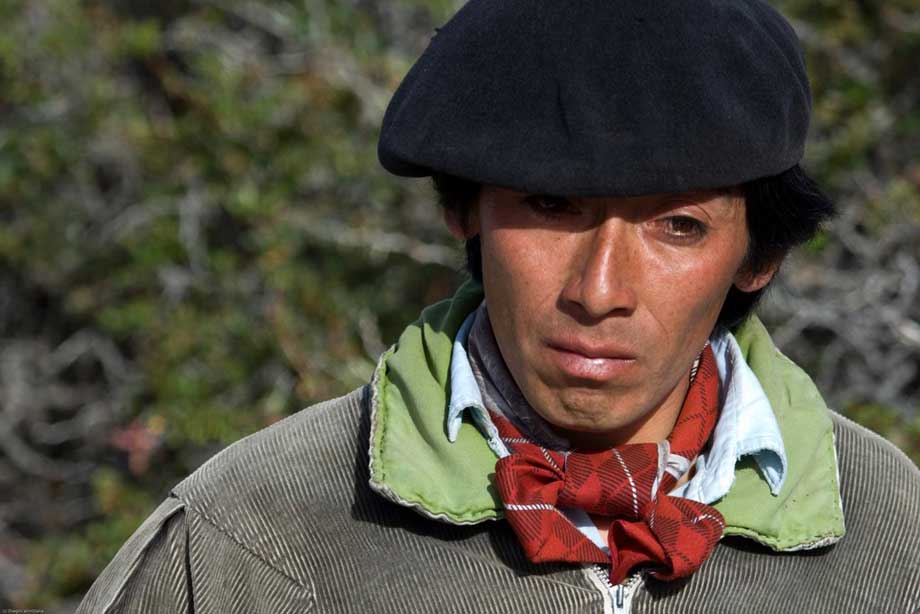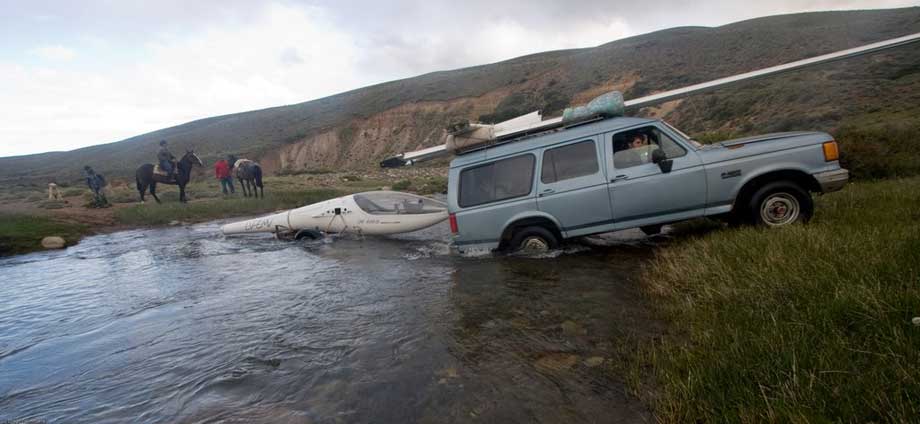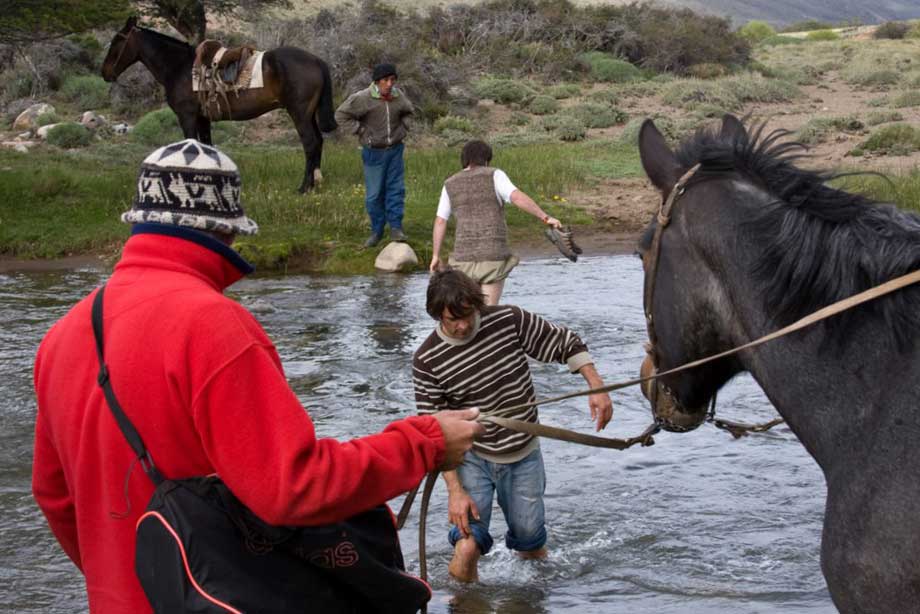Or the folk recovery of a glider by the gauchos on horseback. (In French, oultanding is said “going to the cows”).
I don’t like to speak of outlandings, but the accident of the Argentinean glider close to Bariloche is a beautiful example of everything that should not be made with a motorized glider. The glider is partially destroyed and by miracle it pilot is unhurt.
The pilot Argentin, Mr M, in his DG800 motorized seemed to possess all knowledge on the points of wave and the emergency fields, having participated to the camps of Chos Mallal organized by the Germans and bragging about to have been the first Argentinean pilot to have achieved a 1.000 km.
November 21, with a very humid northwest wind and a forecasting of the passage of a cloudy cover the after noon, M. will be the only one to take off. In the evening we will learn that he crashed in the steppe around 18h 70 Km to the south of Bariloche.
By luck, the gauchos of the Fitalancao Estancia saw the accident and went to warn some friends paragliger pilots. Among them Diego Vallmitjana, professional photographer, who deposited at the following link 81 magnificent photos on the epic recuperation of the glider:
http://picasaweb.google.com/id142857/Aporizaje
After analysis of the flight (available on OLC at http://www.onlinecontest.org/olc-2.0/gliding/flightinfo.html?flightId=-726342997 tie) it comes out that the pilot made an accumulation of mistakes that one drives to risk his life.
- Already at takeoff, first signal of jumpiness. He stops his engine 900 m at 10 km from the first ridge. Attempt vowed to the failure.
- 1st engine restart 300 m QFE, while coming back toward the takeoff, 5 minutes of engine to reach a well exposed ridge. The flight that follows will be completely unpicked, without taking the wave in a steady way ever until the airport of El Maiten (100 Km to the south), then flight always disjointed until the airport of El Bolson (30 km to the East of Maiten) near the ground until return to El Maiten where he will finally go up to 3500 m in the usual rebound. Instead of heading toward Bariloche by the ridges, he is going to throw itself downwind of the ridges.
- 2nd engine restart 600 m ground, near the emergency field of Norquinco, engine for only 6 minutes. The place is good for the rebounds but the altitude is insufficient especially since no ridge support exists in case of unsuccess. He leaves the local of the last landable field then while heading to Bariloche without catching the wave in the rotors.
- 3rd engine restart 200 m ground for only 4 minutes with engine stop at 1.000 m. With this altitude he could have come back again at Norquinco, but alas he pursues full downwind North toward the hills. It is the beginning of the end.
- 4th starting less than 300 m, that fails and it is the crash. Broken fuselage, open wing, collapsed gear but the pilot is unscathed. The extraction by the glider of the bushes typical of the Patagonian steppe absorbed the energy.




The recovery team immediately verified the working of the engine which started at the first attempt and retracted back without difficulty. There was panic and false manoeuvre therefore on behalf of the pilot.
In conclusion, on four engine air re-starts, the pilot made did not follow the rule one time, that says that an engine start must take place that in local L/D 15 + security of a landable field. This is the result.
